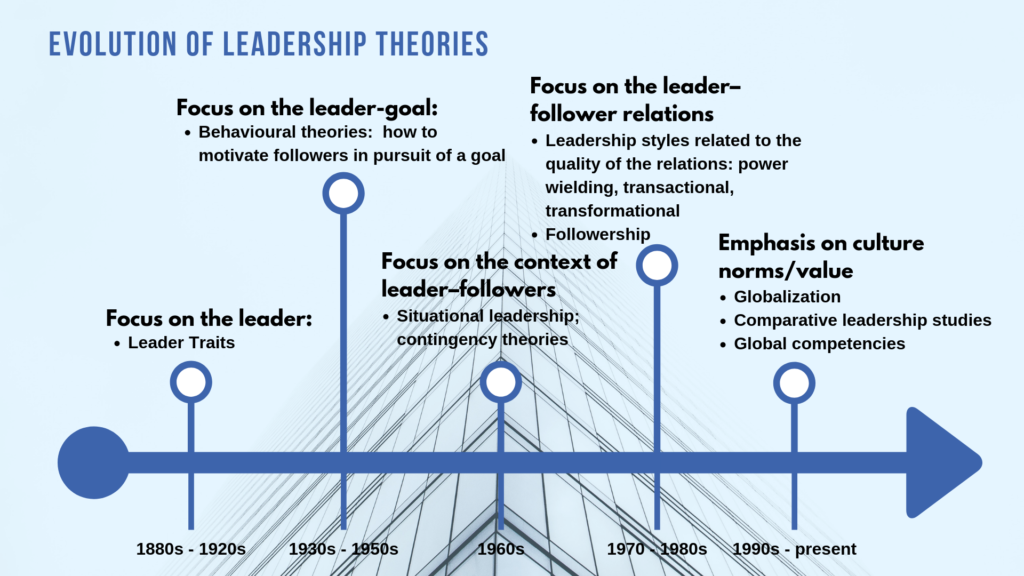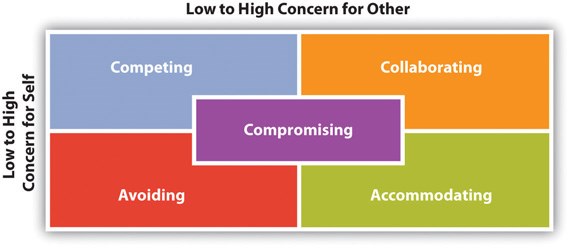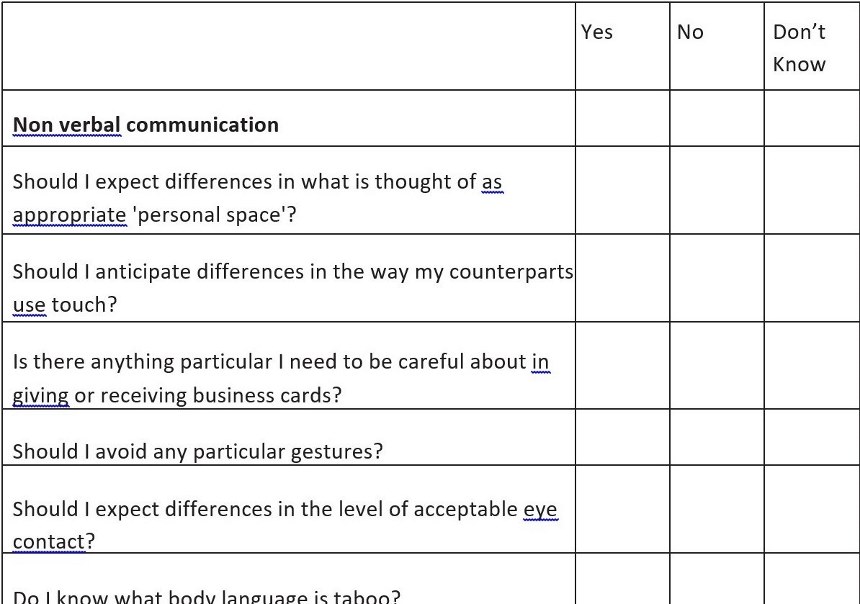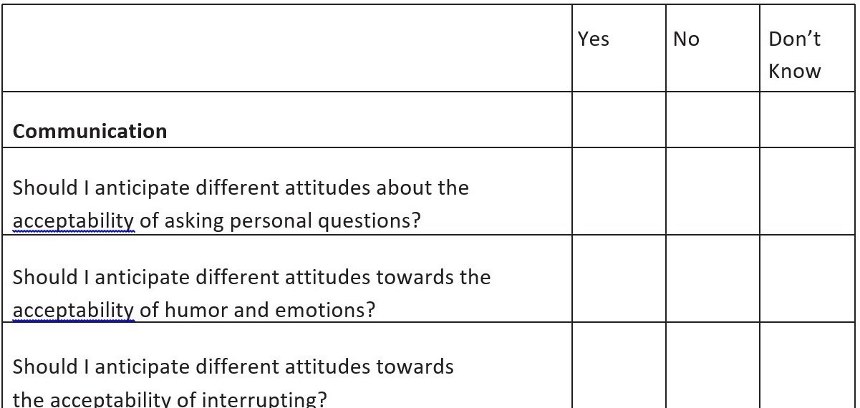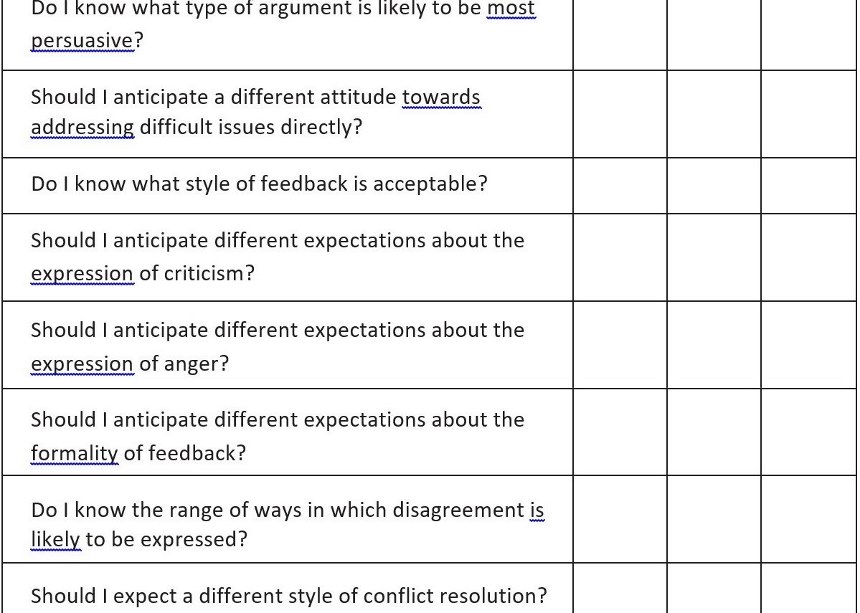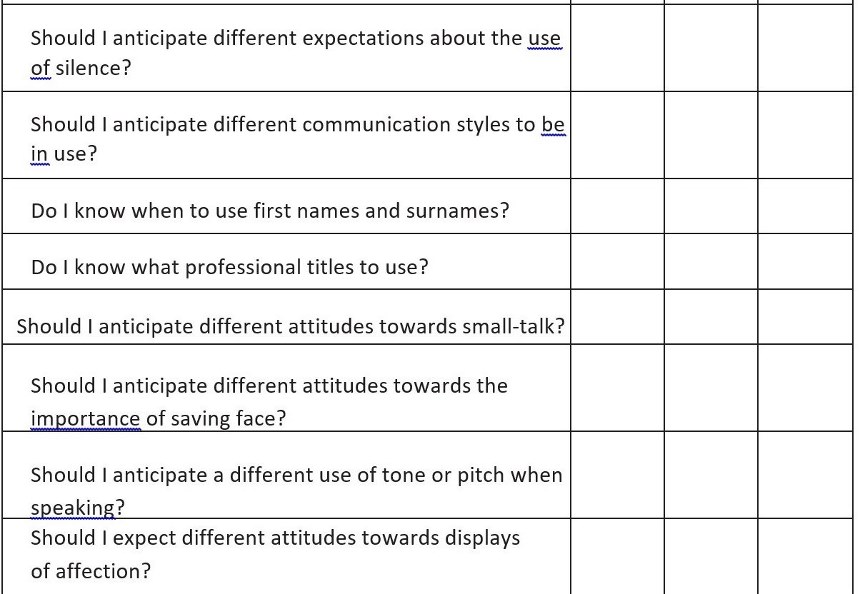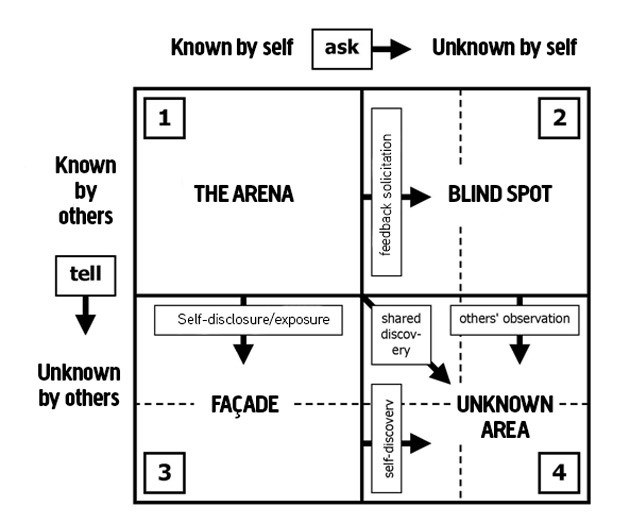In this section, you will learn about nonverbal communication features in an intercultural environment.
The topic will be explored with the help of video clips, introduction of core concepts and theory. The idea is to explore the topic and make cross-cultural comparisons.
To get started, watch & listen to an expert (Professor Troy Wiwczarowski, University of Debrecen, Hungary) discussing interpersonal communication in student teams on video. The video clip takes less than a minute to see. Professor Wiwczarowski refers to an international intensive course where students work in multicultural teams.
What is nonverbal communication?
According to Liisa Salo-Lee, (2006), it includes the following aspects:
time,
space,
touching,
body language
Find out more, see the ebook here.
Physical space
Physical space is a term defining how near or far from other people you go and feel comfortable about it. Individuals generally want to keep their own personal space. In certain cultures the tolerance for physical distance is higher which means they like being quite near or even in close physical contact to other people.
Body language
…is expressions, gestures, movements, body position, eye contact, smell, physical appearance, clothing, artefacts and living environment.
Think about this:
Why do we need to pay attention to our body language?
How can body language cause misunderstandings / misinterpretations?
How can you avoid it?
Gestures
When you communicate, you may move your body, your hands or your feet at the same time and these movements are called gestures.
It is important you understand the significance of gestures in order to manage nonverbal communication. Gestures can be interpreted quite differently in different cultures.
After watching the video below, think carefully about the following:
How would you describe gestures and gesturing in your culture?
When you communicate, what are the gestures you use the most?
Facial expressions
Researches have come up with six types of facial expressions which are universal. They are sadness, happiness, fear, anger, surprise and anger.
Bear in mind, there might be differencies in how individuals express these feelings. However in some cultures facial expressions are more openly expressed than in others.
Make a list of the expressions which you think are not universal and think about some situations in cultural context which might cause misunderstanding.
Study Task
To conclude, you have a chance to test some of the concepts and ideas presented above. Here is what you will do:
Watch the video made by Finnish UAS students and see how many different features of nonverbal communication you can come up with while watching. List the features. Remember to look out for features of all the categories introduced above (gestures, facial expressions, body language, physical space).
Next we ask you to think about the following:
What are the nonverbal communication traits typical of your culture?
Consider the following features
- gestures
- facial expressions
- body language
- physical space
How are they different from the examples illustrated above?
Can you find similarities?
Find out more:
Brown, P. & Levinson, S. C. (1987). Politeness: Some universals in language usage. Cambridge: Cambridge University Press.
Carston, R. (2002). Thoughts and utterances: The pragmatics of explicit communication. Malden MA: Blackwell Publishing.
Lewis, R. D. (1999). When cultures collide: Managing successfully across cultures. London: Nicholas Brealey Publishing.
Meyer, E. (2014). The culture map: Decoding how people think, lead, and get things done across cultures. New York: Public Affairs.
Neese, B. (2016, August 17). Intercultural communication: High- and low-context cultures. [blog].
Retrieved from https://online.seu.edu/high-and-low-context-cultures.




